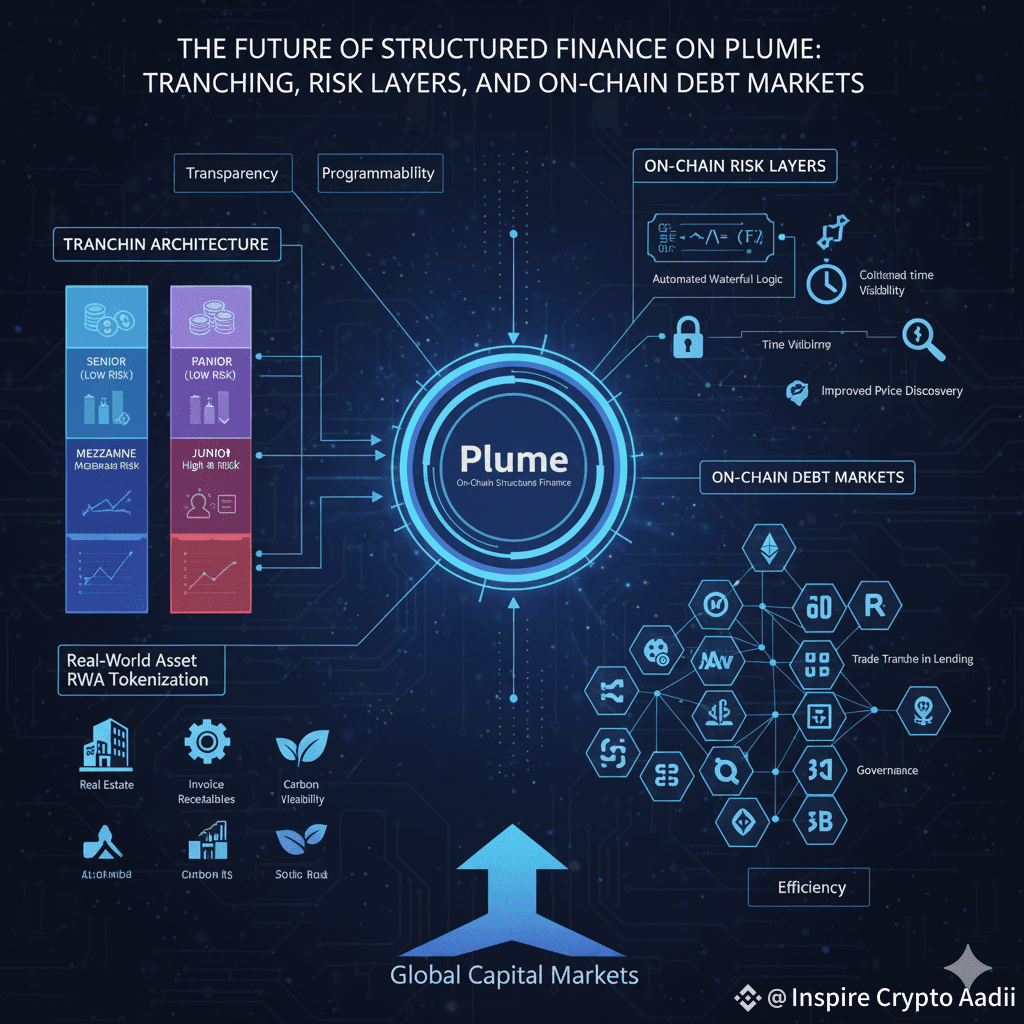The world of finance is rapidly evolving as decentralized finance (DeFi) protocols challenge the legacy systems of traditional finance (TradFi). One of the most transformative shifts lies in structured finance — particularly in how risk is sliced, packaged, and distributed. Platforms like Plume are at the forefront of this evolution, pioneering on-chain structured finance products that offer transparency, efficiency, and composability.
This article explores how Plume is reshaping the landscape of structured finance through tranching, risk stratification, and on-chain debt markets, potentially unlocking a new era for global capital markets.
What Is Structured Finance?
Structured finance refers to the design of complex financial instruments that pool assets and redistribute associated risks across different layers, or tranches. Traditionally, these instruments include collateralized debt obligations (CDOs), mortgage-backed securities (MBS), and asset-backed securities (ABS) all engineered to meet investor appetite for varying risk and return profiles.
Historically dominated by investment banks and institutional players, structured finance has been opaque, expensive, and exclusive. However, blockchain technology particularly platforms like Plume is opening these markets to new possibilities.
Enter Plume: A Paradigm Shift
Plume is building the infrastructure for on-chain structured finance, with a focus on tokenizing real-world assets (RWAs) and offering capital markets tools via smart contracts.
At the core of Plume's innovation is its tranching architecture, which allows investors to gain exposure to different layers of risk and yield in a trust-minimized and programmable environment.
Key Components of Plume’s Structured Finance Ecosystem:
1. Tranching Mechanism
Tranching on Plume mirrors traditional models but benefits from blockchain-native enhancements. Investors can choose between:
Senior tranches (lower risk, lower return)
Mezzanine tranches (moderate risk/return)
Junior or equity tranches (higher risk, higher return)
Each tranche is governed by transparent smart contracts that define how losses and returns are allocated minimizing human error and moral hazard.
2. On-Chain Risk Layers
Risk stratification is handled via algorithms, creating a deterministic distribution of capital and losses. This enables:
Real-time visibility into risk exposure
Automated waterfall logic for payments
Improved price discovery across tranches
The result? More efficient capital allocation and the potential for dynamic repricing based on market sentiment and credit performance.
3. On-Chain Debt Markets
Plume connects structured products with broader DeFi liquidity via on-chain marketplaces. Investors can:
Trade tranche tokens in secondary markets
Use them as collateral in lending protocols
Participate in governance or risk parameter adjustments
This integration turns previously illiquid financial products into interoperable, composable DeFi primitives.
Advantages of On-Chain Structured Finance
Transparency: Blockchain auditability removes the "black box" nature of traditional structured products.
Programmability: Automated rules reduce reliance on third-party servicers and rating agencies.
Accessibility: Retail and global investors can participate with as little as a few dollars, improving inclusion.
Speed and Efficiency: Real-time settlements and smart contract execution cut down overhead and latency.
Use Cases and Applications
Real-World Asset Tokenization
Plume can tranche cash flows from assets like real estate, invoice receivables, or carbon credits — creating risk-tiered tokens for DeFi investors.
Institutional DeFi Products
Hedge funds and asset managers can build structured vaults for various strategies (e.g., yield farming, basis trading), offering tailored risk profiles to clients.
Credit Markets
Plume could become the base layer for decentralized credit scoring and undercollateralized lending markets, where risk is transparently sliced and priced.
Challenges and Risks
While promising, on-chain structured finance is not without challenges:
Regulatory Uncertainty: Tokenized securities may fall under complex regulatory regimes.
Smart Contract Risks: Bugs or exploits could compromise tranche logic or funds.
Market Liquidity: Deep and stable markets for tranche tokens need time to develop.
Data Oracles: Real-world asset performance must be accurately reported and verified on-chain.
Plume and its ecosystem partners will need to address these challenges proactively to ensure long-term adoption and trust.
Looking Ahead: A New Financial Infrastructure
The future of structured finance lies in programmable, permissionless debt instruments that can be built, traded, and settled entirely on-chain. Platforms like Plume are laying the groundwork for:
A global credit layer for DeFi and TradFi convergence
Composable capital markets where structured products plug into DAOs, protocols, and automated strategies
Dynamic risk pricing based on real-time market and credit conditions
In this new paradigm, structured finance becomes more transparent, equitable, and efficient aligning better with the decentralized ethos of the blockchain economy.
Final Thoughts
Plume is more than a structured finance platform it’s a blueprint for the future of capital markets. By bringing tranching, risk layers, and debt issuance on-chain, it empowers both issuers and investors to operate in a more open, programmable, and efficient financial system.
As DeFi matures and RWAs become integral to blockchain ecosystems, platforms like Plume could redefine the way the world thinks about credit, yield, and risk from Wall Street to Web3.
@Plume - RWA Chain $PLUME #Plume

